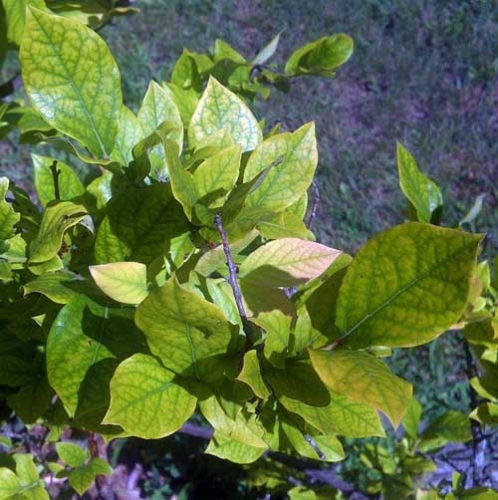Soil test before you plant blueberries
A simple soil test reveals whether blueberries will struggle or thrive in a new site.
Many people want to plant blueberries. I call it blueberry fever. Gardeners are excited to plant these exotic plants in their gardens. People who want to be blueberry farmers think they can make big money if they plant blueberries. I get calls from people about to plant blueberries, asking what they should do to get the site ready. I always ask “What is the soil pH?” The answer is usually “I do not know” or “Is that important?”
To my mind, the soil pH is the single most important factor in selecting a blueberry site. If the guiding mantra in real estate is location, location, location, then with blueberries it is pH, pH, pH! Blueberries require acid soils. Michigan State University Extension recommends the soil pH be between 4.5 and 5.5. If you plant blueberries in the neutral soils (soil pH 6.5 to 7) favored by most plants, theplants will be yellow and grow poorly if they grow at all.

Iron chlorosis is often the result of planting in soil where the pH is high.
The symptoms are usually found on young leaves and shoots. The leaves
are yellow with green veins. The weak shoot tops are often killed by winter.
Photo credit: Mark Longstroth, MSUE
If you want to grow blueberries, the first thing you should do is test the soil pH of the site to see if the soil is acid enough to support blueberries. Unfortunately, lowering the soil pH is not quick, cheap or easy. Lowering the soil pH is a slow process that may take years. The cheapest way to lower soil pH is to add sulfur to the soil and wait for soil bacteria to convert the sulfur to sulfate to lower the soil pH. This process can take several years and requires hundreds or thousands of pounds of sulfur per acre.
Changing the soil pH is a lot easier and quicker if you do not already have blueberries planted. If the soil pH is above 6 or the soil is heavy clay, I do not think it is worthwhile to try and change the soil pH for blueberries. It simply takes too much time, effort and money. You would be better off to find another high value crop that grows on your site rather than spending a lot of time and money to convert the site for blueberries while other people have good blueberry sites that they can plant with little effort.
There are other quicker, less economical ways to change the soil pH. You can use ferrous sulfate instead of sulfur, but you need eight times as much. Some growers inject sulfuric acid into their irrigation water, but that is dangerous as well as expensive. Homeowners can simply replace the soil for a few bushes, but that is not really practical for a commercial grower with 1,452 blueberry bushes planted 3 feet by 10 feet on an acre of ground.
Blueberries are a long-lived perennial plant and it takes several years to establish a planting of blueberry bushes. You should not expect to harvest fruit for the first three or four years as you grow the bush and it takes 10 to 12 years for a field to reach full production. The initial costs for the first six years are about $15,000 to $20,000 per acre. The growing costs are about $2,000 to $3,000 a year. The first step in planting blueberries is to find out if you can easily grow them on your site. Otherwise they can become an expensive money pit.
For more information see the Lowering the soil pH with sulfur factsheet at the Michigan Blueberry Facts website.



 Print
Print Email
Email